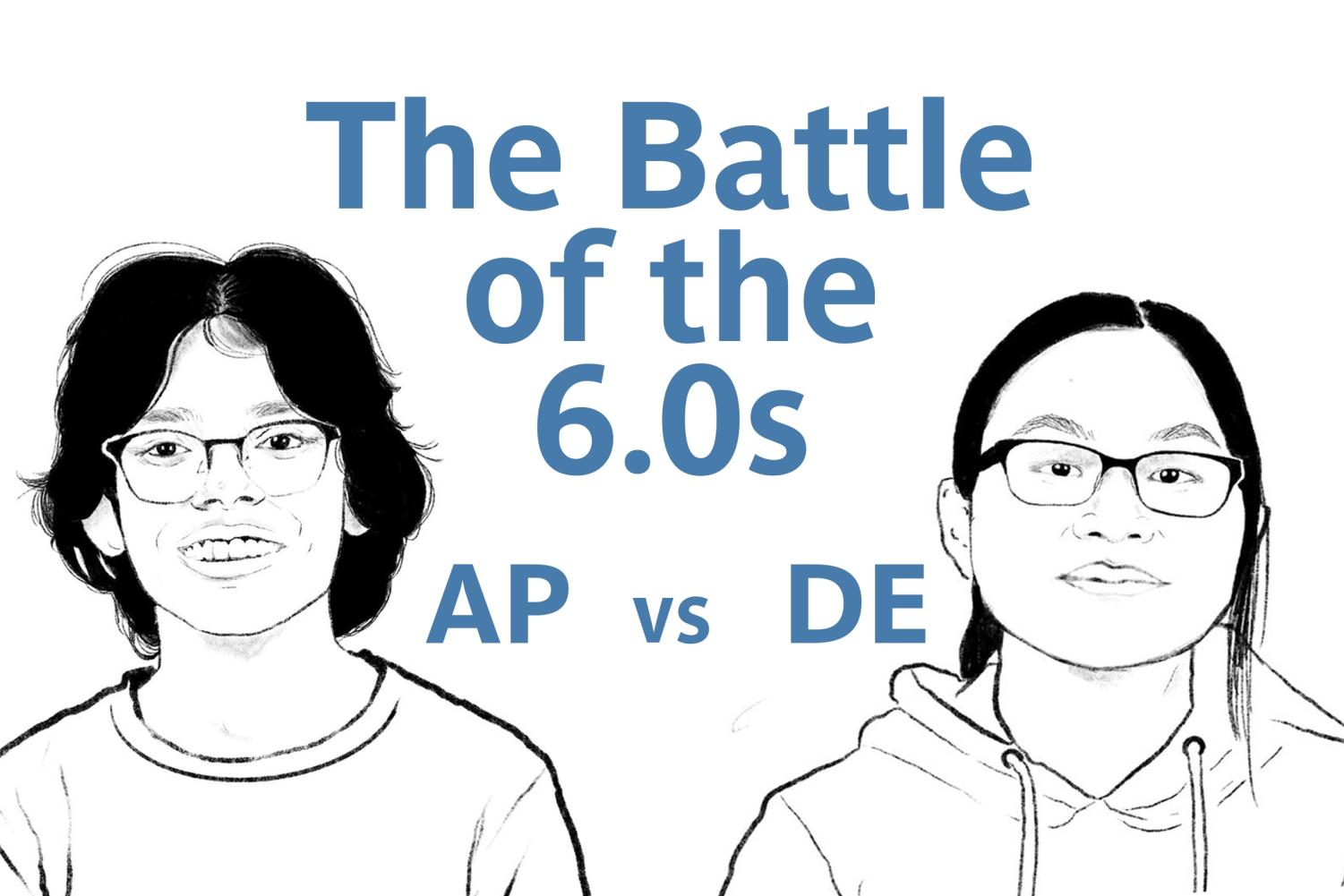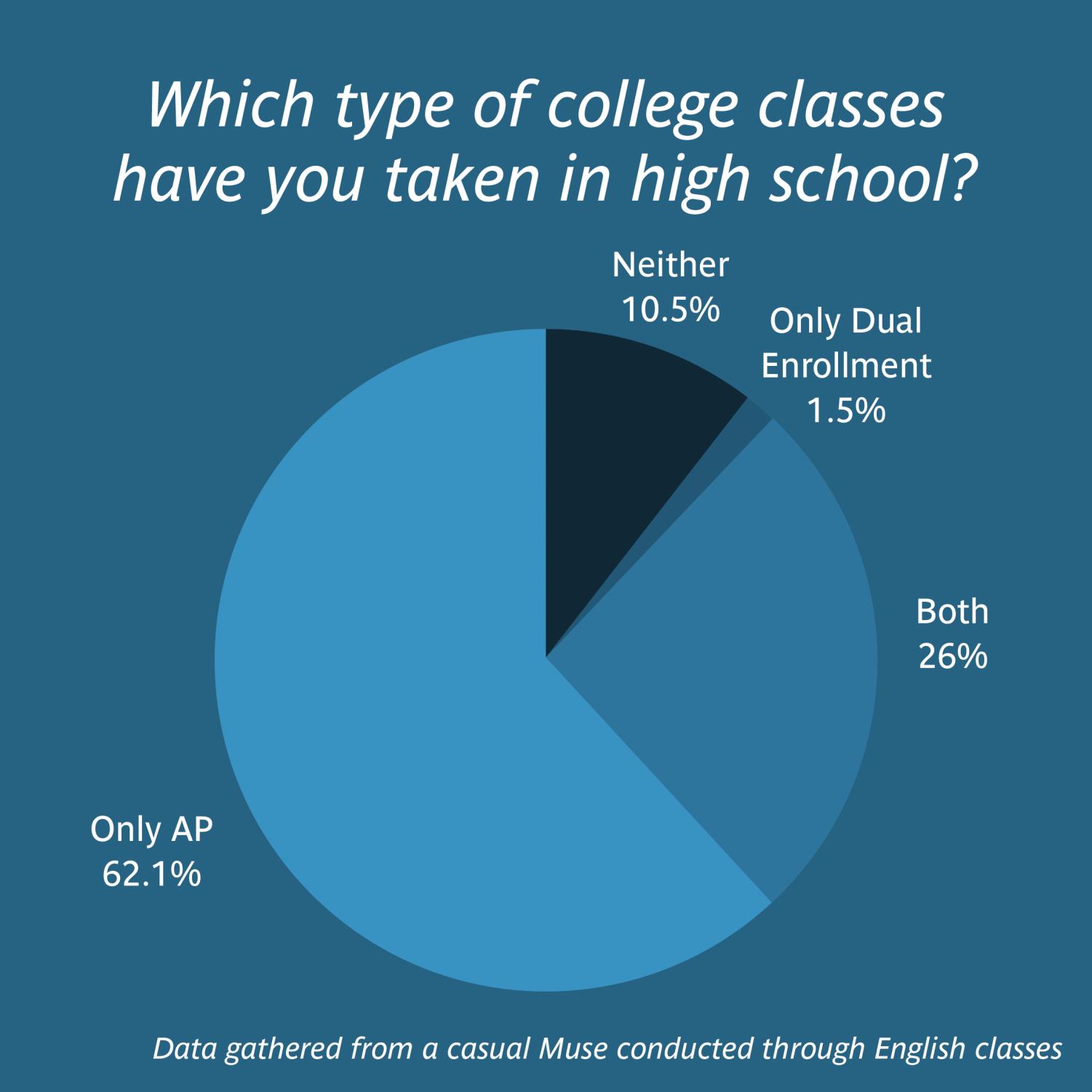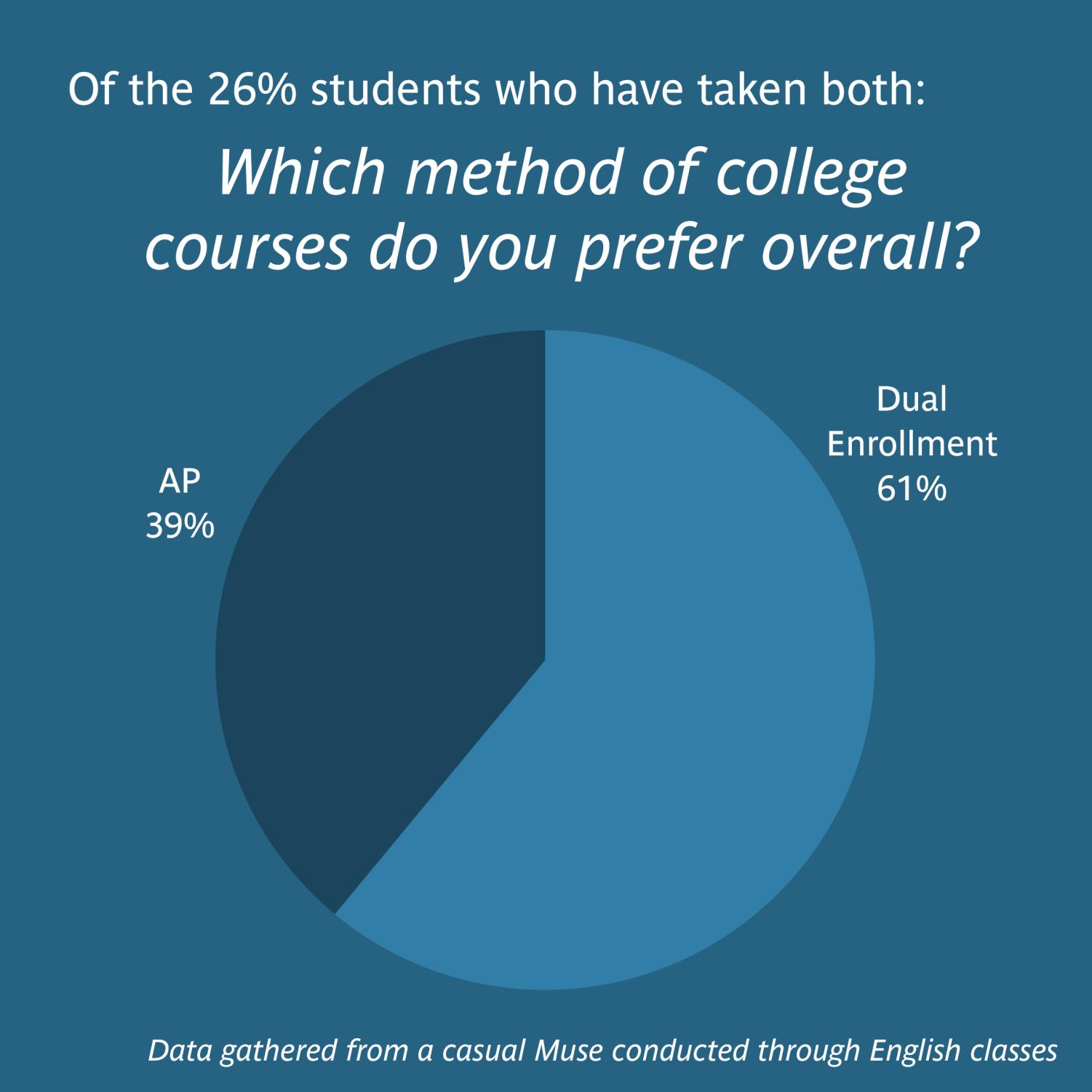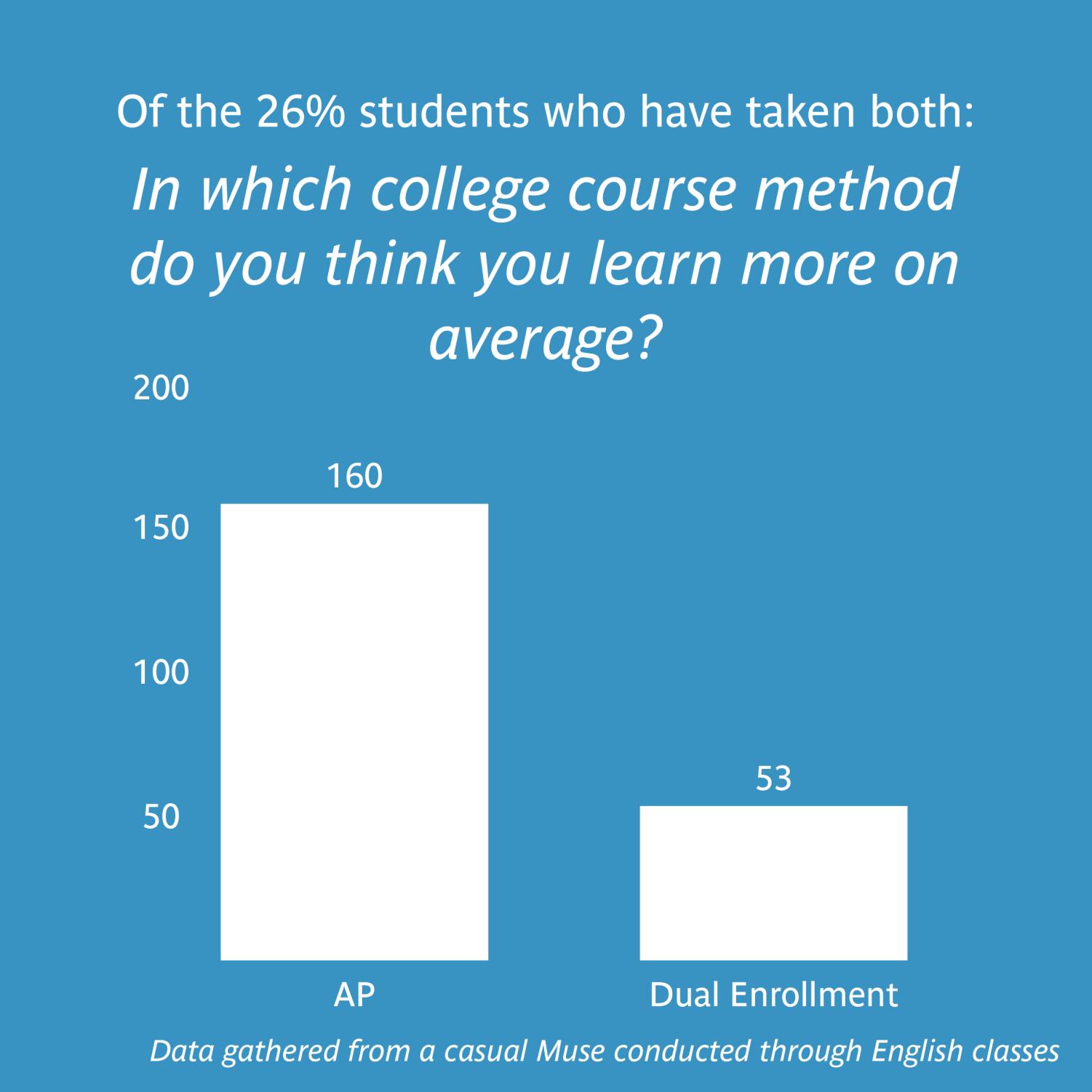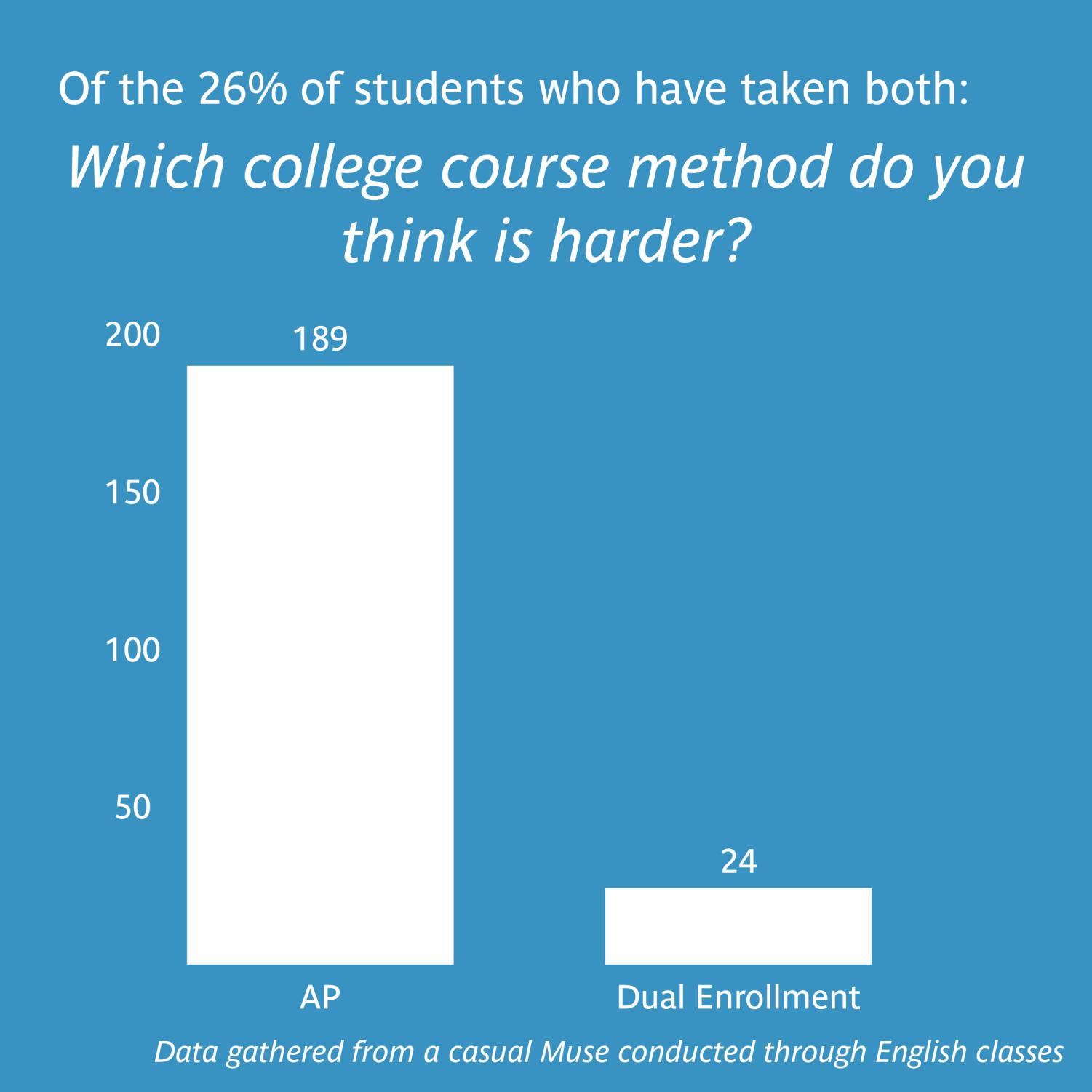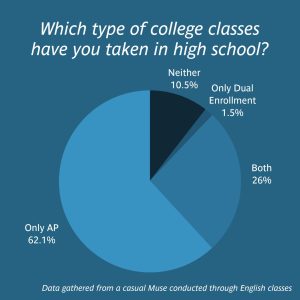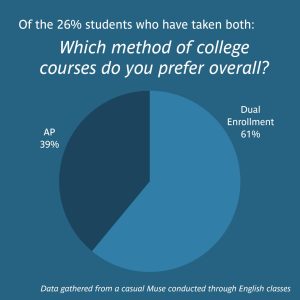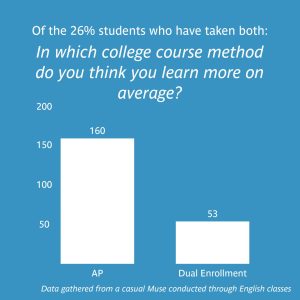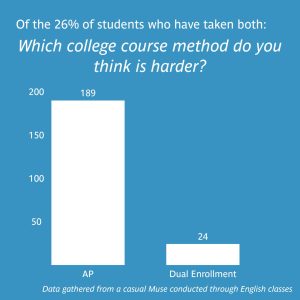THE BATTLE OF THE 6.0S
An Advanced Placement and a Dual Enrollment student advocate for their preferred method of college-level instruction
March 16, 2023
AP
I took my first AP class freshman year.
I participate in the Advanced Placement program. I took AP Human Geography my freshman year, AP World History my sophomore year, and am currently taking 6 additional AP classes ranging from AP Biology to AP English Language & Composition.
The Advanced Placement program is the hallmark of educational non-profit College Board’s services, offering 38 for-credit classes and administering thousands of exams that, as College Board quantifies, are accepted by over 100 universities around the world.
The AP curriculum enables high school students across the nation to follow a standardized curriculum while preparing for exams in May. Even further, the accessibility of AP classes domestically is unmatched.
According to the AP Course Ledger, there are over 15,000 schools that offer AP in the United States in the 2022-2023 school year.
I’ve found the standardized nature of AP classes to be extremely helpful in learning course content. Not only is the curriculum the same regardless of the student, but it also means that more resources are accessible. This includes preparation books, online practice quizzes or exams, term flashcards and videos ensuring student understanding of AP course content.
For dual enrollment classes, that level of nationwide support and accessible resources is nonexistent.
Dual enrollment classes fail to rival the flexibility of AP courses due to availability on platforms like Florida Virtual School (FLVS), expanding the number of AP classes that can be taken and at one’s preferred pace as long as a student finishes in time to take the exam in May.
Having taken multiple AP courses on FLVS myself, including AP Psychology, I know firsthand the benefits that come from online instruction that can both earn AP credit and can be taken on my own terms. I can meet frequently one-on-one with teachers live, expand my course load, and complete assignments at a more manageable pace, all while obtaining course credit by passing the AP exam.
Beyond the accessibility of AP courses, there’s comfort in knowing that a student has room for error with AP; students are able to withdraw from in-person AP classes with no consequences on their ability to take equally rigorous classes in the future, giving them an opportunity to adjust their schedule to their circumstances and their needs. This differs from the policy of dual enrollment where a student is disqualified from taking additional courses at that institution if a student withdraws or does not pass the course.
It is clear that AP classes better weigh the needs over the convenience of dual enrollment, which sacrifice quantity for quality. Students are empowered to embrace the resources, opportunities, and simplicities of the Advanced Placement program, giving colleges a good frame of reference for rigorous courseloads and paving the path toward a lifelong journey of academic success.

Arik Karim is a third-year multimedia staffer & lead on The Muse. Within the school, he also serves as officers of the Dreyfoos Speech and Debate Team,...
Dual Enrollment
At 16 years old, I started taking classes at the University of Florida.
I was given this opportunity by participating in dual enrollment. In the Fall Term, I was given two free periods to take Earth Science and Fundamentals of Speech Communication. I could’ve chosen AP classes for those slots since they provide comparable rigor and HPA increase, but there is a distinct advantage to dual enrollment classes that triumphs any AP option: dual enrollment gives more opportunities to take a wider variety of courses while also having greater flexibility.
Dual enrollment is a program where high school students can take courses at certain colleges and universities. On campus, we have three schools we can enroll with: PBSC, UF, and FAU.
What makes dual enrollment more beneficial lies in the unstable nature of AP classes and their credits: the restrictive options, curriculum, class selection process, and credit transfer.
Despite having 38 official AP classes, only 25 are available for us at school, and this is further limited by our specific art areas and potential prerequisites.
I can’t easily take AP Music Theory as a communications student — even if I’m interested in expanding my musical knowledge — but I can take Music Theory 1 at PBSC, where there are over 100 classes offered for dual enrollment in both online and in-person formats, and, unlike most AP classes, are only a semester long.
These term lengths also help in giving more room to explore subjects you may not be able to in high school and especially through AP. Rather than taking a 1 credit math class for the full year, a student can take College Algebra in the fall then have fun exploring political science in the Spring Term.
Ever worried about what RateMyProfessor says about your teacher? No problem; typically, multiple instructors are offered for the same class in college.
Dual enrollment also grants the chance to choose a schedule best for you. Although all courses are online at UF, deciding when I view lessons and complete materials is up to my discretion. The same freedom cannot be said for AP classes.
While satisfying diploma credits through dual enrollment, you also can knock out General Education classes required in your first two years of college.These can later go towards your undergraduate degree, helping you complete it sooner and practically for free as dual enrollment classes are paid for by the county.
You also get a better opportunity to meet requirements to transfer dual enrollment credits. Not only is there no guarantee an institution will take an AP credit, you may have less of a chance of doing so since Universities such as UF often require an exam score of 4 or 5 to transfer AP credits for college credits or placing caps on the number of credits that are transferable.
Though there’s no denying that colleges also find ways to restrict dual enrollment credits, an exam score can’t solely stop a credit from transferring. For a stronger likelihood of transferring credit from a dual enrollment class, one would need to simply pass — receiving a minimum grade of C.
There may not even be a final exam required either. A course could have a professor who chooses to drop the final exam grade or may not require one at all. Instead of sitting in a gym answering multiple choice questions and/or constructing written responses for over an hour, all I needed to do for my last assignment in UF General Psychology class was turn in a typed paper analyzing research on any psychology subject I liked — and it was an open note assignment with no proctor. For those who struggle taking tests or don’t want to spend a year taking a class teaching to an exam, dual enrollment is a golden opportunity.
Dual enrollment expands a student’s freedom in their class selection, schedule, and ability to transfer credits. All of this is granted by checking for emails sent to students about dual enrollment registration and an appointment with a guidance counselor. Why settle for the college-level class when actual college classes are only a couple of emails away?

Alex Pham is a third-year staffer on The Muse and the managing website editor. They've spent their time on the publication communicating the importance...

